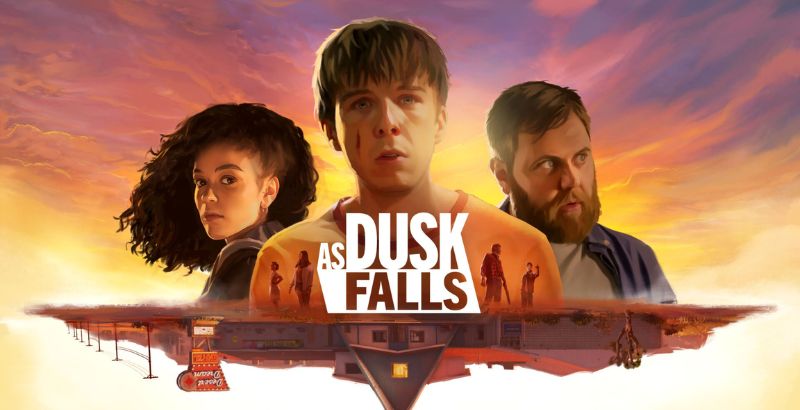
I was lucky enough to play Skybox Labs‘ new cinematic platformer Stela at PAX West 2019. In a crowded bar with other indie games on display and music playing I put on the headset and faded into the game. Stela consumed my attention and remained one of the games I needed to play in full after leaving the convention. It was beautiful, it was spooky, and it was challenging.
Standing out from other cinematic platforms that more often than not focus on children, Stela’s story centers on a woman witnessing the final days of a mysterious ancient world. She moves through a number of environments, some in the wild, others which put her under attack from afar, and others that take place in contained spaces, ruins, or dwellings. But each environment regardless of their setting is tethered to the one before it. Ethereal and dark, the cinematic quality of Stela is perfection. It is uninterrupted by HUDS or tutorials. It is just you, the platforms, the puzzles, and the beautiful roaring score that lulls you into calmness or awakens you with fear.
Stela is built to show you the world and not tell you how to find your way through it. There is no tutorial, there is no dialogue, it is just a sparse linear world that allows you to utilize the foreground, background, and middle ground while restricting your movement with obstacles and puzzles. This, of course, means that you die a lot and while it is frustrating, nothing is insurmountable.
The game doesn’t require rapid pressing or quick reflexes. Instead, the game asks you to plan, time yourself, and above all else be patient. While the puzzles aren’t unsolvable, they often take a few attempts to learn how you should approach it. Do you wait? Do you run? Dying a few times clears that up for you and allows you to learn with each death granting you new information to solve the puzzle.

Additionally, no level is repetitive. Outside of the buffer levels, simple in-between stages that allow you to reset for the next challenge, each and every way to clear a level is unique, while also putting to work the knowledge of mechanics that you’ve accrued through up until that point. While this is expected for a multi-leveled platformer it is something that is difficult to pull off without words or advanced controls.
Your character doesn’t have a gun or tools, she is just herself. Moving the left stick directionally moves her, A makes her jump, and X makes her hold onto objects in the world. Three simple actions that when combined create gameplay that feels more like dancing than platforming.
While the games does not offer up a tutorial, it does make the patterns easy to spot. For example, in some puzzles, your character must move objects within the world in order to either move to the next stage or stop an impending danger. This is simple to understand after the first two levels. Each level has a beautiful design and if you need to interact with the world instead of climbing or running through it, the object to push or pull stands out. Using details to differentiate it from the rest of the setting, once you know what to look it’s your first instinct.
That said, Stela keeps its challenge by not having the same visual cues for each level. Instead, the design is dictated by the next setting. In the first stages, you look at the red accents, in the next you look at stones that are a different shade than the world around it, even further still silver and grey illuminates objects to turn or switch on or off.

The variety of settings is one of the main beauties of Stela. It allows it to keep its charm visually, while the clear and different level design helps keeps the challenge up even when you’re half-way through. The enemy variety also helps with this. With swarms of beetles, burning arrows raining down on you in timed intervals, and my favorite the del Torian monsters that dwarf your character and emit disturbing roars as they crash into you.
Stela pushes the player and playing it on Xbox One, it offers a reward in the form of achievement for clearing every stage. Which, while inconsequential to some, the sound of achievements still excites me. While you get the achievements just for working through the game, there are some to challenge the player – complete the game without dying and complete the game in under 90 minutes, for example.
While Stela isn’t a horror game, it is tense and fear-inducing. While there is no dialogue, the score tells Stela’s story and the enemies crashing into you, cause more than enough fear. All of this makes Stela a true experience, one to be played with the lights dimmed and the volume turned as high you can handle.
It’s been a long time since I’ve been truly challenged by a platformer and since I have been smitten with a platformer so much that I’ve refused to give into frustration. I can not accurately describe how much I love Stela, though I do fear some will see the challenge as too difficult. That being said, the game does a great job of keeping the challenge baked into level design and not the controls. The cinematic beauty of Stela can’t be understated and I wholeheartedly hope that Skybox Labs expands on Stela because this beautiful and challenging world is one I need more of.
Stela is available on Steam, Xbox One, and Apple Arcade.
Stela
-
Rating - 10/1010/10
TL; DR
The cinematic beauty of Stela can’t be understated and I wholeheartedly hope that Skybox Labs expands on Stela because this beautiful and challenging world is one I need more of.






